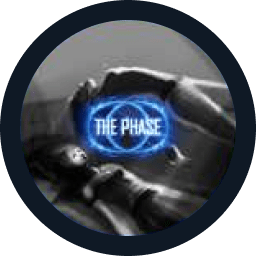Life, which is filled with daily chores, work, studies, family issues, and other concerns, often doesn’t allow for sudden changes of scenery, chances to make new friends, or the freedom to embark on spontaneous trips. And no matter how much you wish to alter past events, there’s no “reset” button in life. It seems that life follows a rigid timeline, one where deviations are not allowed, mistakes are often unforgiven, and our unavoidable fate overwhelms us.
Sleep exists precisely to provide rest, psychological relief, and restoration. During sleep, the body regenerates, metabolic waste is cleared away, and other crucial self-regulatory processes take place, which are less intensive during wakefulness. Human sleep is divided into two main phases — slow and rapid — which alternate cyclically. Each cycle lasts about an hour and a half. The slow phase is responsible for physical restoration, while the rapid phase restores the mind and emotions. It is during the rapid phase that brain activity increases and dreams occur.
The rapid phase involves many processes. For example, it is during this period that people dream (whether or not they remember their dreams). Also, in this phase, the brain processes and consolidates the information gathered during the day, forming new synaptic connections (reinforcing learned skills). Metabolic processes also occur by which the body mitigates the effects of stress.
Can extending sleep time resolve these issues? Not necessarily. Considering life’s demands, you may not even have time to sleep longer. It might seem like a hopeless situation, leading to a buildup of problems in the body. However, the solution lies in improving sleep quality, specifically during the rapid phase. Dreams play a key role in this and help resolve many psychological and emotional issues.
But there’s more. Sometimes, during dreams, a person suddenly realizes that they are dreaming. When this happens, they often feel the urge to change the course of events within the dream, which is easily achieved in the flexible reality of the dream world. Typically, people wake up from such dreams feeling well-rested and emotionally uplifted. A good lucid dream is real and can significantly improve one’s well-being, as noted by many who practice lucid dreaming. This raises the question often asked by skeptics and enthusiasts alike: lucid dreaming — is it real, or merely an illusion created by the sleeping brain?
For more on whether lucid dreams truly impact psychological well-being, you can read Michael Raduga’s book REM Psychology: Solving Psychological Problems in Lucid Dreams.
When a person regularly practices lucid dreaming, they not only address their emotional and psychological needs but also simply rest. Occasionally, they even fulfill desires that they don’t have the time or opportunities to fulfill in real life.
Sometimes, after awakening from a lucid dream, it feels as though the experience was so transformative that the person starts to view the world differently, perceiving what seemed like insurmountable problems as minor, solvable tasks that aren’t even worth stressing over.
What Is a Lucid Dream?
The main advantage of a lucid dream compared to an ordinary one is that the person understands they are dreaming and that everything around them is unreal. They can decide what to do and how to interact with the environment, controlling their thoughts and emotions to a certain degree. A person can plan their actions and purposefully carry them out.
Lucid dreaming can be learned.
In dreams, there are no limiting factors, except for those created by the dreamer. A lucid dream can be considered a world of limitless possibilities for the human mind.
The History of Lucid Dreams
Lucid dreaming has been practiced since ancient times in various cultures. Publications on the study of lucid dreams began to emerge in the mid-19th century. However, the existence of lucid dreams wasn’t scientifically confirmed until the 20th century.
Lucid dreamers were studied using electroencephalography (EEG), polysomnography, and other devices, and it was discovered that lucid dreams are characterized by higher brain activity than regular dreams.
Further confirmation came at the end of the 20th century when American researcher Stephen LaBerge carried out a study at Stanford University. Participants signaled the moment they entered a lucid dream in the laboratory, and these signals were recorded by special equipment.
In the early 21st century, researcher Michael Raduga conducted multiple studies at the LaBerge laboratory in Novorossiysk and published several scientific articles confirming the reality of lucid dreaming.
This wealth of scientific evidence allows us to answer the popular question: how real are lucid dreams? For many, the answer is clear—they are vividly experienced, neurologically distinctive, and emotionally impactful enough to be considered as real as waking life, at least within the mind.
How Do You Know You’re in a Lucid Dream?
The mere realization that you’re asleep helps you become aware within a dream. Spontaneous lucidity often happens when a person begins to notice strange or “incorrect” events around them, or when their behavior seems odd.
With regular training, the brain automatically learns to recognize when it is asleep during a dream.
However, a person may sometimes falsely believe they’ve woken up, leading to a loss of lucidity. This can be avoided by using techniques known as “reality checks,” which can be learned.
How to Control Your Dreams
You can learn the basic methods for becoming lucid in dreams through Michael Raduga’s video lessons and books. To learn how to confidently control lucid dreams, enter them regularly, and achieve your desired goals, you can enroll in courses at Michael Raduga’s school.
Whatever dreams you have, you can change any aspect of them, from altering small details to rewriting the entire plot.
Today, the reality of lucid dreams has been scientifically confirmed, many lucid dreaming methods have been developed, and learning has become significantly easier than in previous decades.
So, is lucid dreaming real? All the available evidence makes it clear that lucid dreams are real, and for many, they are a powerful tool for personal growth and problem-solving. If you’ve ever wondered lucid dreaming is it real, both science and personal experience overwhelmingly suggest: yes — it truly is.
FAQ
Recommended reading
How to learn to have lucid dreams
Does lucid dreaming really exist?









